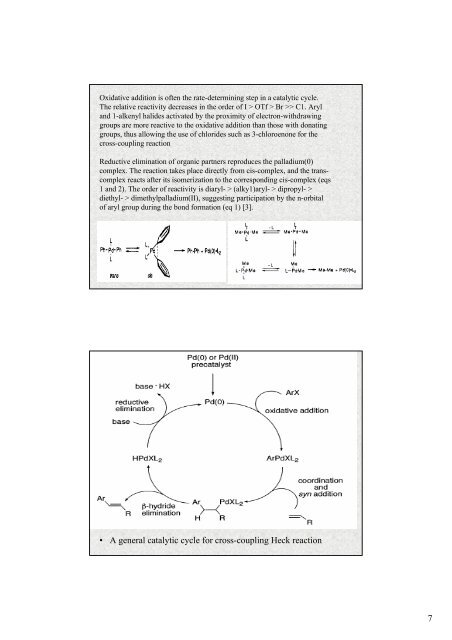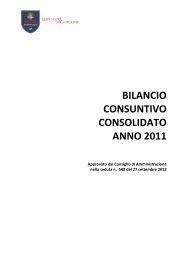Historical Perspective of the Heck Reaction
Historical Perspective of the Heck Reaction
Historical Perspective of the Heck Reaction
You also want an ePaper? Increase the reach of your titles
YUMPU automatically turns print PDFs into web optimized ePapers that Google loves.
Oxidative addition is <strong>of</strong>ten <strong>the</strong> rate-determining step in a catalytic cycle.<br />
The relative reactivity decreases in <strong>the</strong> order <strong>of</strong> I > OTf > Br >> C1. Aryl<br />
and 1-alkenyl halides activated by <strong>the</strong> proximity <strong>of</strong> electron-withdrawing<br />
groups are more reactive to <strong>the</strong> oxidative addition than those with donating<br />
groups, thus allowing <strong>the</strong> use <strong>of</strong> chlorides such as 3-chloroenone for <strong>the</strong><br />
cross-coupling reaction<br />
Reductive elimination <strong>of</strong> organic partners reproduces <strong>the</strong> palladium(0)<br />
complex. The reaction takes place directly from cis-complex, and <strong>the</strong> transcomplex<br />
reacts after its isomerization to <strong>the</strong> corresponding cis-complex (eqs<br />
1 and 2). The order <strong>of</strong> reactivity is diaryl- > (alky1)aryl- > dipropyl- ><br />
diethyl- > dimethylpalladium(II), suggesting participation by <strong>the</strong> n-orbital<br />
<strong>of</strong> aryl group during <strong>the</strong> bond formation (eq 1) [3].<br />
• A general catalytic cycle for cross-coupling <strong>Heck</strong> reaction<br />
7








